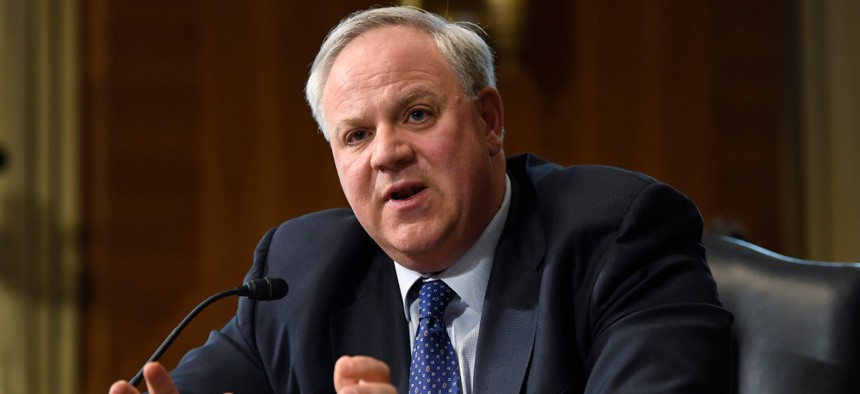Trump Administration Officially Opens Interior Dept. Bureau's New Western Headquarters
Office opening follows most career staff refusing to relocate out of Washington, D.C.
The Trump administration has officially completed moving a headquarters office of a component of the Interior Department to Colorado, following more than a year of controversy and an exodus of career employees.
Interior Secretary David Bernhardt signed a memorandum on Monday formally establishing the Bureau of Land Management headquarters in Grand Junction, Colorado, a move the administration has advocated by highlighting that the agency primarily manages public lands in western states. Critics of the decision, including BLM staff, Democrats on Capitol Hill and conservationists, derided the move as a politically motivated opportunity to shed career experts and relocate the agency away from the halls of power.
“After careful review, the Department of the Interior determined that the public interest is best served by relocating BLM's Headquarters to the western United States,” Bernhardt wrote in his memo.
In addition to the new headquarters, which will house 27 Bureau of Land Management employees, the agency has given relocation notices to hundreds of Washington-based employees forcing them to move to western posts or find a new job. Less than half of headquarters workers accepted the mandatory reassignments to western states, instead opting to retire or find new jobs. Bernhardt told Congress in March he was not concerned about the resulting vacancies, saying BLM had fielded a high number of “phenomenal” applicants to fill them. William Perry Pendley, who is serving as head of BLM, has said it will take a year for BLM to fill all the vacant positions.
BLM employees told Government Executive that even some of those who have accepted their reassignments are still looking for jobs in Washington and will come back home as soon as possible. In the runup to the relocations, workers all suggested morale at the Washington office had plummeted, mistrust of leadership had grown and there was a sinking feeling that the Trump administration was seeking to sideline important work.
Interior has defended the move by highlighting that nearly all of the land BLM manages is in western states, so it makes sense for the decision-makers to be there too. Additionally, Trump administration officials said the move will lower lease payments, reduce travel costs and generate savings by paying employees smaller cost-of-living locality rates. Employees and other critics of the plan, however, have noted that about 97% of BLM’s workforce is already located in the western United States. Relocating employees out of Washington will make enforcement actions carry less weight, they said, and reduce the influence of BLM within Interior and the rest of the Trump administration.
“This relocation strengthens our relationship with communities in the west by ensuring decision-makers are living and working closer to the lands they manage for the American people,” Bernhardt said this week. “This effort will also save a great deal of money that can be reinvested in our field operations.”
Pendley stressed that BLM sought to find jobs in Washington for those who declined their relocation order.
The Government Accountability Office blasted the Trump administration for the relocation process, saying it failed to take key steps to justify the move, including analyzing all associated costs, communicating with employees and assessing the workforce impact. BLM ultimately severely underestimated the number of employees who would refuse to move west, GAO said.
Around 60 BLM employees will remain in Washington. BLM did not respond to an inquiry into how many of the 27 positions in Grand Junction—which includes most of the agency’s top leadership—are currently filled, or how many of those employees came from Washington.




